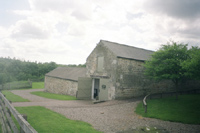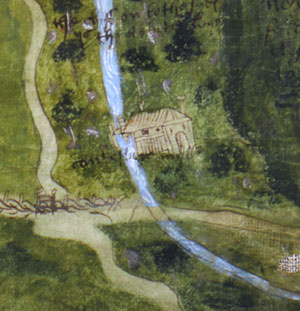 |
 |
 |
 |
 |
 |
 |
|
The Cistercians did much to transform the landscape of Northern England. To prepare the land for farming and free more space for buildings, they embarked upon a programme of land clearance and reclamation; they drained marshland, cleared woodland and converted stagnant pools into running water. At the heart of the Cistercians’ agricultural and economic policy was the grange-system of farming. This established a series of agricultural centres worked by the lay-brothers, from which the land was cultivated, crops harvested and livestock reared. The Yorkshire Cistercians
were particularly noted for their sheep-farming, which was suited
to the uplands and moorlands
in the North. It was largely under the Yorkshire Cistercians
that wool became the most lucrative cash-crop in Britain. Woodland afforded
pasture for the abbey’s livestock, in particular
pigs; it also provided a source of timber and roofing materials,
fuel and minerals. Every monastic community
required a reliable water supply for washing, drinking, cooking
and brewing, for liturgical purposes, to power
the mills and, not least of all, to remove waste from the site.
This could be a highly
complex process that involved skilful engineering. The
Cistercians in Yorkshire stood at the forefront of several technological
innovations. They were amongst the first to have
tanning and fulling-mills, and one of the earliest water-driven
hammer forges was built
at Kirkstall Abbey. |
||||
|
|



